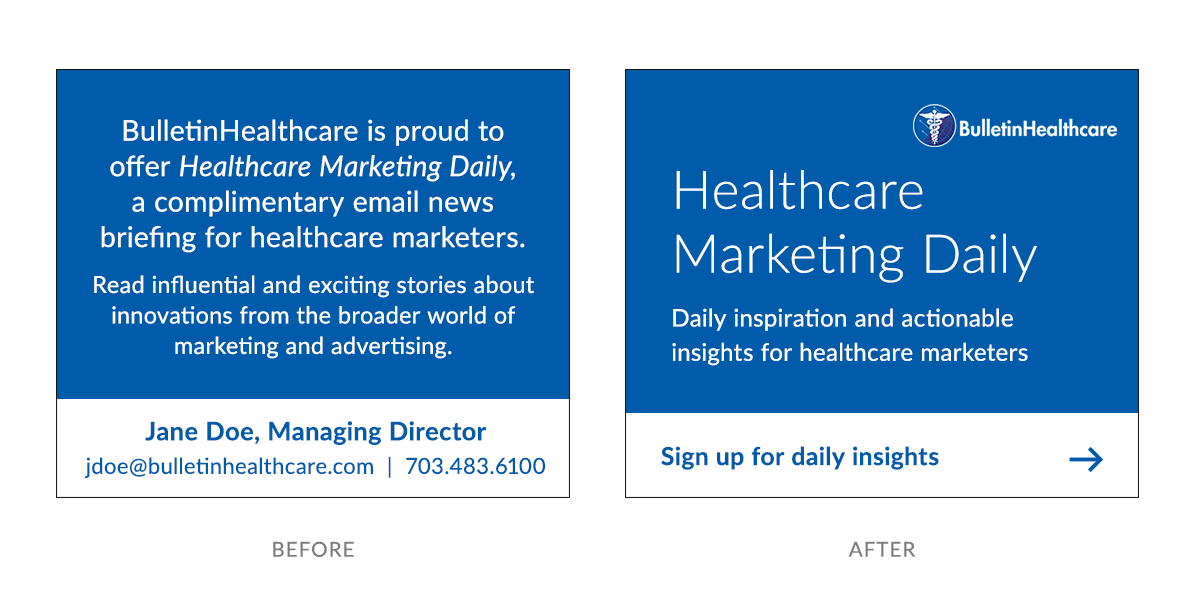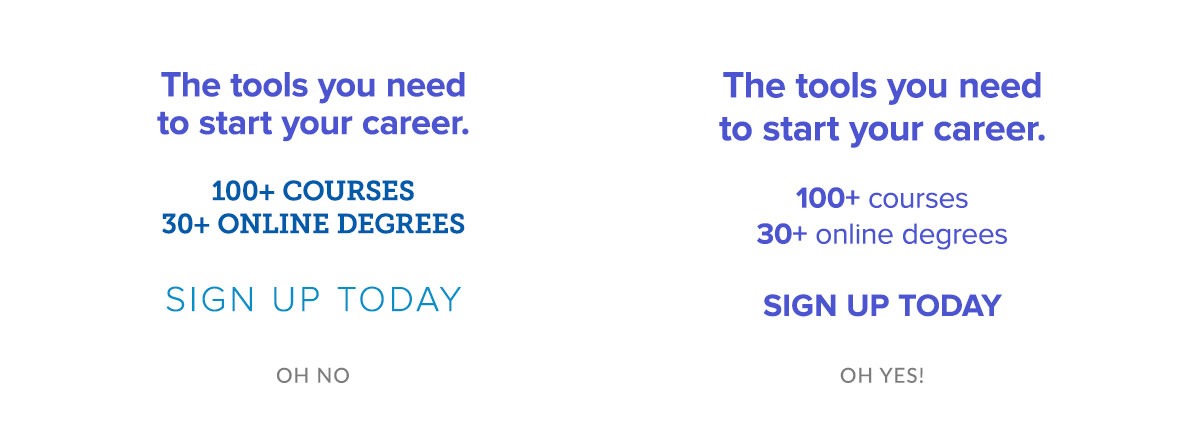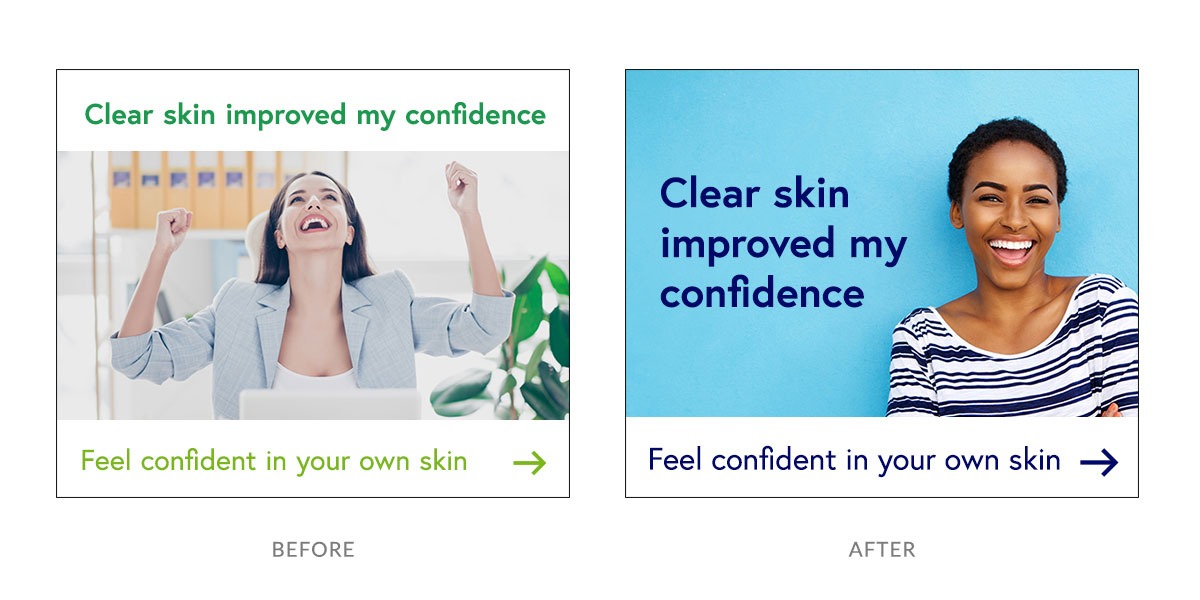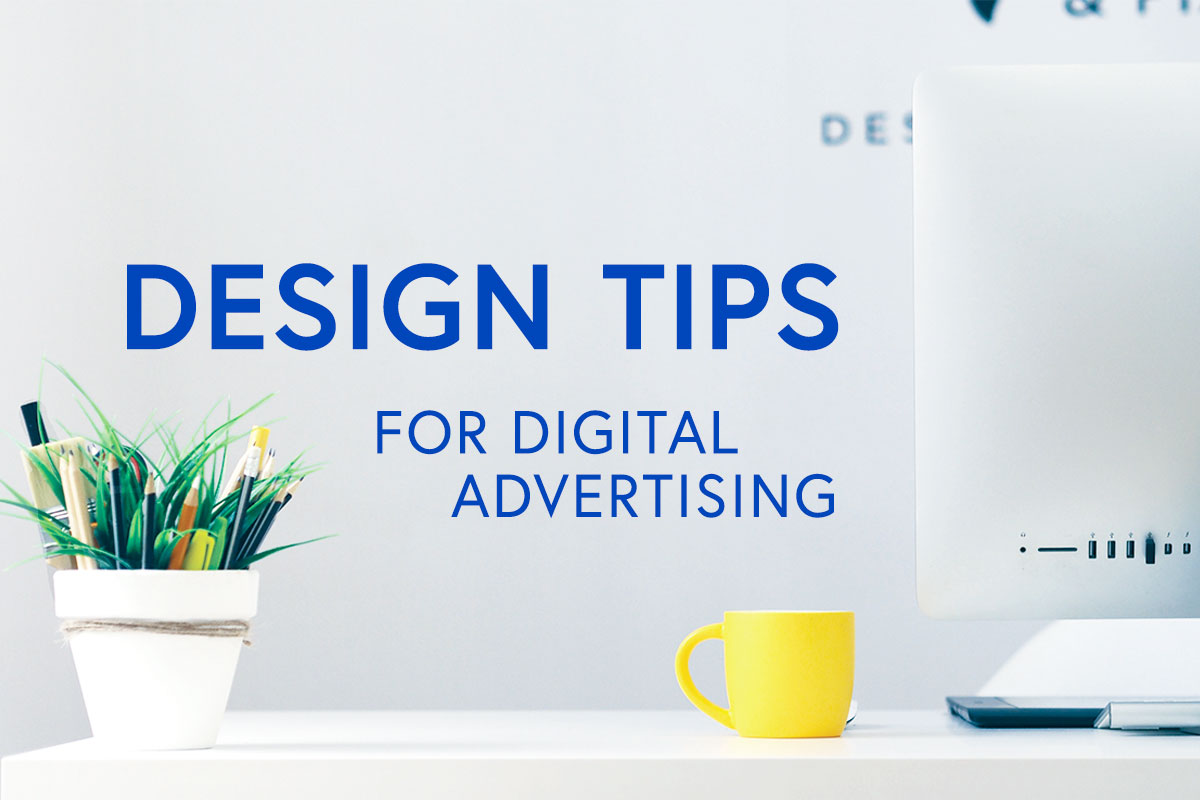Dress to impress. In that brief moment before your future customer scrolls on by, your ad’s design says more than you might think! Much like your outfit for an interview, the colors, fonts, and visuals you choose affect how your audience perceives you.
A bad design will muddy your message. A good design will elevate it.
Below are some best practices for thoughtful, intentional design to help elevate the message in your next ad campaign.
Design Tip #1
Less is More: Be Intentional and Concise.

Avoid walls of text. It may be tempting to copy/paste the language from your landing page into your ad, but remember, we aren’t working with the same amount of real estate. Two or three sentences in a small space can quickly become an indigestible amount of text, disengaging your audience before they read a single word. Be intentional and concise with your messaging.
Cut your contact information. Unlike print advertising, digital ads are meant to be clicked. Save precious space by cutting your contact information. It’s a better user experience to click-through to a landing page, rather than manually typing out an email address or phone number.
Design Tip #2
Use a Strong Type Hierarchy.

Be distinct with your headline, subheadline, and call-to-action. Similar to the dreaded wall of text, a lack of distinctive hierarchy can be difficult for users to consume. Instead, use color, spacing, font weights (ex. light, normal, bold), font sizes, capital cases (uppercase vs. lowercase), and even different font families to create contrast.

Be careful not to overdo it though. It’s easy to go overboard and use too many distinctions, which leads to a lack of unity and cohesiveness. Stick to one or two different elements, such as color and size or color and font weight.
Choose an alignment and stay consistent. Use only one alignment (ex. left, right, center) for a design that looks clean.
Design Tip #3
Visuals Aren’t Filler: Tell Your Story.

A visual shouldn’t be used as filler. Your visual plays a huge part in the message you are communicating. Think about what you are trying to convey and to what audience.
Consider the connotations. Sometimes we are so focused on the subject of an image that we forget the background has something to say too. You don’t want to accidentally include an extra factor that confuses your message. For example, if you were advertising for a coffee machine, you wouldn’t want to photograph it at night unless your message was specifically related to drinking coffee at night.
Make use of negative space. Seek out images that have negative space (the empty space around the subject). Positioning text in a thoughtful manner creates a relationship between the words and graphics.
Show, don’t tell. People smiling directly into the camera can be nice, but a more elegant approach is to show candid shots of people interacting with your product or their environment. Candid shots are relatable and allow the audience to place themselves in the story you’re telling. My favorite resource for beautiful, commercial-free photography is unsplash.com.
Design Tip #4
Be Obvious With Your Call-To-Action.

Make it look clickable. Create a visual indication that your ad is clickable, whether it be a literal button, an arrow, or a classic underlined hyperlink. (See, you just tried to click that, right?)
Be specific. Tell your audience why they should click your ad. A call-to-action such as “register now” or “book today” is more engaging than a “click here to learn more”.
Sometimes design is seen as arbitrary or just the icing on the cake. But design is an important component in positioning yourself as a credible, professional communicator. Remember to make intentional design choices that clearly speak to your target audience.
And finally, I hope these tips prove useful for your next ad campaign!

